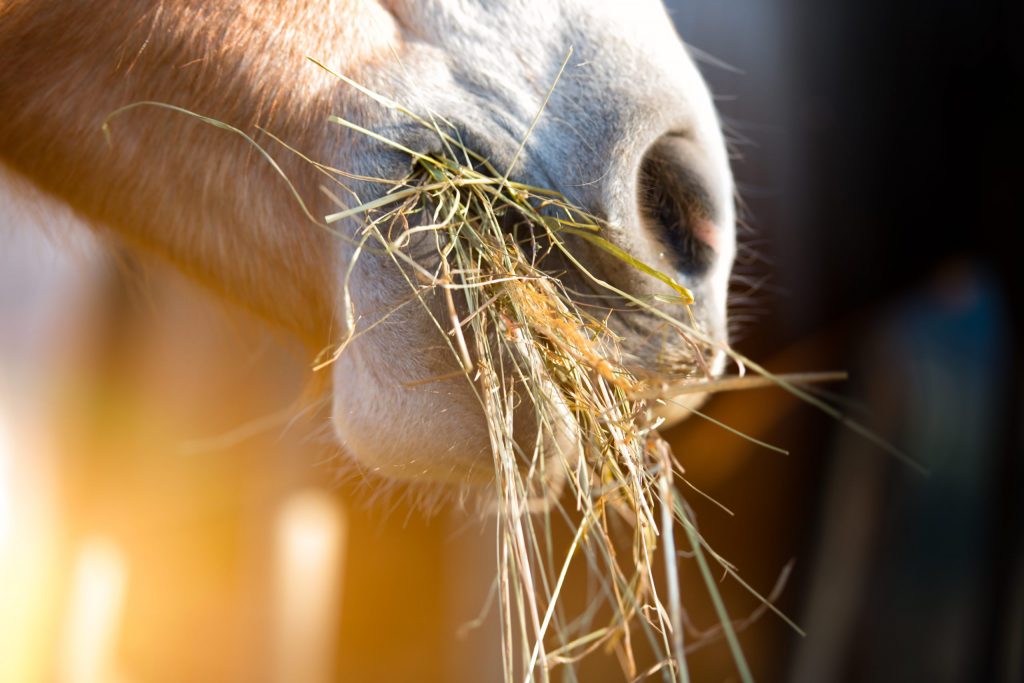Plan for winter hay needs now
- January 8, 2025
- ⎯ Edited Press Release
As the first hay cutting is wrapping up around the Bluegrass State (and elsewhere), a University of Kentucky extension specialist is urging horse owners to begin planning for future hay needs.
“The recent rains have provided some relief, increasing hopes for a successful second cut,” said Bob Coleman, equine extension specialist for the UK Martin-Gatton College of Agriculture, Food and Environment, in a recent press release. “While some horse owners feed hay year-round, others need to prepare for a specific duration, particularly during winter.”
Calculating amounts needed
Coleman said owners may determine the amount of hay their horses need using a simple calculation based on 2% of each horse’s body weight per day. For instance, a 1,200-pound horse would need approximately 24 pounds of hay daily.

“It is important to note that the amount of hay required per day can be adjusted if a forage analysis is available,” Coleman said. “Such analysis provides insights into the hay’s nutritional value and helps determine necessary supplementation. I encourage horse owners to contact their county extension agent for assistance in obtaining a proper sample and getting it analyzed. The cost of sample analyses typically range from $20 to $35 per sample, depending on the required level of analysis.”
Horse owners who purchase hay by the bale need to pay attention to bale weights. For instance, a $5-bale weighing 40 pounds costs approximately 12.5 cents per pound, while a 50-pound bale is 10 cents per pound. Over the feeding period, this difference can significantly add up.
Storage and wastage
It’s also crucial to have adequate storage space for purchased hay. Coleman said to choose a well-drained storage area that protects hay from the elements.
“While a building is the ideal storage option, it’s not always an option,” he said. “At the very least, consider tarping hay stored outdoors to prevent spoilage. Losses due to poor storage can easily surpass the expenses associated with developing a proper system.”
Minimizing feeding loss or waste is another important consideration. Simply tossing hay on the ground can result in significant waste, ranging from 15% to more than 50%. Preventing waste saves feed and reduces the overall cost of feeding. Investing in hay feeders can be a cost-effective solution, as the savings from reduced waste often offset the initial investment. Hay nets are another option.
Coleman emphasized that hay is a mobile commodity.
“Although hay may be readily available in some areas, regions experiencing a shortage will require hay to be transported across the state or county,” he said. “Making hay purchasing decisions early can ensure buying at a reasonable price when the supply is abundant. Waiting until later in the feeding season might lead to reduced availability and significantly higher costs.”
The original press release on which this is based was written by Aimee Nielson and published on
July 18, 2023 on the Martin-Gatton College of Agriculture, Food and Environment website.





